by Rich Harpe, Principal CPA at Matthews, Carter & Boyce, P.C.
In the digital age, clients often ignore—or even resent—forms and paperwork that aren’t yet online. But don’t let your clients fall into the trap of omitting critical assets from their estate and financial plans. Indeed, clients may forget to mention or outright neglect beneficiary designations on life insurance policies and retirement plan documents.
Such a thing may have happened to a Proctor & Gamble employee who died in 2015. Way back in 1987, the employee had named his girlfriend at the time as the beneficiary of his retirement plan. Although that relationship ended (and he went on to have another long-term relationship), this employee never updated his beneficiary designation. By the time he died, his retirement plan—which had grown to nearly $1 million—passed via the beneficiary designation to the 1980s ex-girlfriend. In April 2024, the U.S. District Court ruled that the 1987 handwritten beneficiary designation remained valid.
This case emphasizes the importance of keeping beneficiary designations up-to-date. It also serves as an important reminder for your clients to collect information about all their assets and cover each in an estate plan update. Retirement accounts and life insurance policies left over from prior employers or long-gone phases of life are easy to overlook.
We often see the Estate or Trust named as the designated beneficiary of a deceased individual’s Individual Retirement Account. This can add complexities and costs to handling the annual Required Minimum Distribution and the disbursement of these funds to the beneficiaries of the Estate or Trust. Also, an Individual Retirement Account does not receive a step-up in value at the date of death of the retirement account holder, so it may make sense to designate a charity as the beneficiary.
Moreover, a beneficiary designation offers a simple and effective way for a client to leave a charitable bequest to a fund at the Community Foundation. A bequest to a fund via a beneficiary designation on a qualified retirement plan is an especially effective charitable giving tool because it avoids income and estate taxes.

The Community Foundation team is happy to help you structure charitable giving tools and plans to achieve your clients’ philanthropic goals—whether through beneficiary designations or any other type of charitable giving vehicle. This email address is being protected from spambots. You need JavaScript enabled to view it.!
The information contained in this article is provided for informational purposes only. It is not intended as legal, accounting, or financial planning advice.


 Questions?
Questions? Questions?
Questions?





